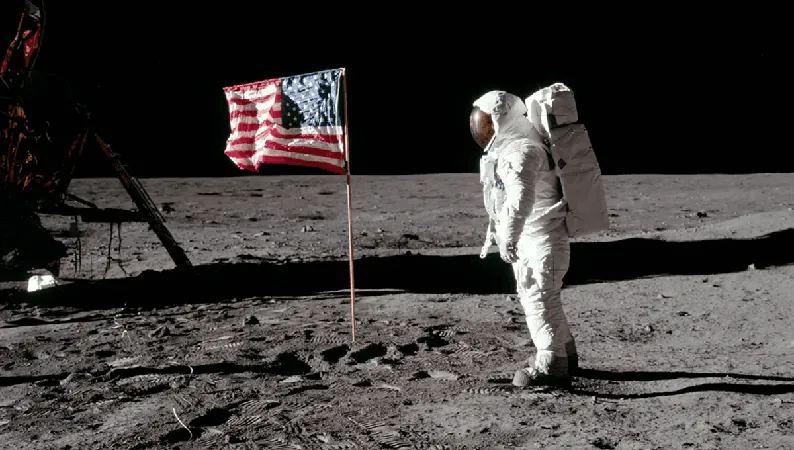
Why Astronauts Haven't Truly Left Earth's Atmosphere: NASA's Shocking Revelation!
2025-04-15
Author: Noah
The Surprising Truth About Space Exploration
Despite iconic names like Yuri Gagarin and Neil Armstrong being etched in history, none of these space voyagers have technically ventured beyond Earth’s atmosphere. Even the renowned International Space Station (ISS) exists within this atmospheric layer, where gravity is still a formidable force, measuring about 90% of what we experience at sea level.
What Lies Above: NASA's Insight
NASA expert Doug Rowland sheds light on this perplexing topic: "Many think our atmosphere abruptly ends just above us, but in reality, it extends high into the sky, gradually thinning with altitude." He notes that even at the altitude of the ISS, a couple of hundred miles up, enough air exists to create drag. Without regular rocket boosts, the ISS would plummet back to Earth—much like a car slowed by air resistance.
Defining the Edge of Space: The Kármán Line
So, how do scientists determine where space begins? The Kármán line, an internationally recognized boundary set at 100 kilometers (62 miles) above the Earth, serves as a reference point. While this line signifies the transition into space, it’s crucial to understand that most of Earth’s atmosphere remains below this threshold.
Astounding New Findings on Earth's Atmosphere
A 2019 study, utilizing data from NASA and the European Space Agency’s Solar and Heliospheric Observatory (SOHO), revealed that Earth's atmosphere might extend astonishingly far, with a cloud of hydrogen—the geocorona—reaching close to 391,000 miles (629,300 kilometers) into space, surpassing the Moon's orbit! At around 60,000 kilometers above the Earth, researchers found there are still 70 hydrogen atoms per cubic centimeter, demonstrating just how expansive our atmosphere truly is.
Even Neil Armstrong’s legendary Moon landing occurred within the grasp of Earth’s atmosphere, albeit in an area where atomic density is drastically reduced.
An Overlapping Existence: Earth, Moon, and the Sun
This revelation complicates our understanding of space further, as both Earth and the Moon exist within the Sun's atmosphere as well. Rowland explains this intricate relationship: "Going from the Earth's atmosphere to the Sun's creates a fascinating dichotomy in our exploration of space. At some point, one transcends into the heliosphere, where the boundaries of solar influence fade into the void of interstellar space."
The Bottom Line: Where Does Space Truly Begin?
The question of where the atmosphere ends and space begins can depend on your perspective. According to Rowland, "When pondering the vastness above us, that boundary is about 400 miles up. However, the expanse beyond is rich with interesting phenomena, dispelling the myth of emptiness in space."









 Brasil (PT)
Brasil (PT)
 Canada (EN)
Canada (EN)
 Chile (ES)
Chile (ES)
 Česko (CS)
Česko (CS)
 대한민국 (KO)
대한민국 (KO)
 España (ES)
España (ES)
 France (FR)
France (FR)
 Hong Kong (EN)
Hong Kong (EN)
 Italia (IT)
Italia (IT)
 日本 (JA)
日本 (JA)
 Magyarország (HU)
Magyarország (HU)
 Norge (NO)
Norge (NO)
 Polska (PL)
Polska (PL)
 Schweiz (DE)
Schweiz (DE)
 Singapore (EN)
Singapore (EN)
 Sverige (SV)
Sverige (SV)
 Suomi (FI)
Suomi (FI)
 Türkiye (TR)
Türkiye (TR)
 الإمارات العربية المتحدة (AR)
الإمارات العربية المتحدة (AR)